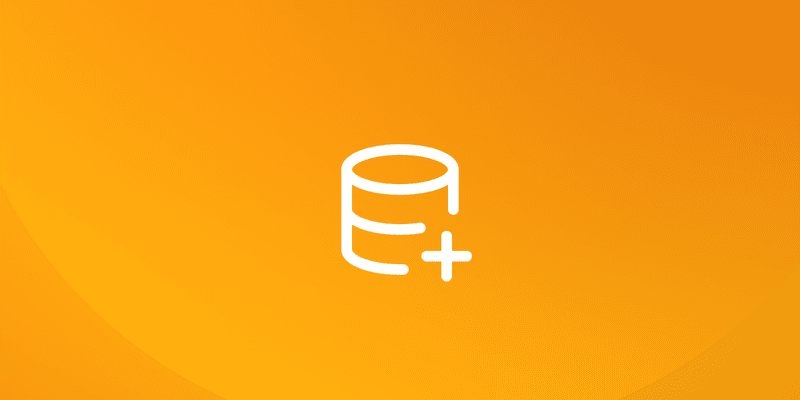Gathering essential research data is the key to any successful user research process. While many prioritize analyzing research findings, the significance of data collection methods often remains overlooked. That’s why, in this article, we’ll elaborate on the best data collection methods for qualitative and quantitative research.
Given that every business must determine the methodologies best suited to their unique circumstances, understanding the uses and benefits of various types of data in qualitative and quantitative research is imperative. Continue reading to discover what it takes to successfully optimize your data collection and the best collection methods to do so.
Types of Data Collection Methods For Qualitative And Quantitative Research
Quantitative and qualitative data both serve vital roles in user research. While the first specializes in numerical data, the latter focuses on non-numerical information. Once the research findings have been gathered, they can be used to uncover meaningful customer insights, address common pain points, and identify areas of improvement.
With numerous online tools available, such as User Evaluation, organizing and analyzing your data has never been easier. However, before you dive into data interpretation, you must first collect the needed information from a predetermined testing group. Although numerous collection methods are available, the most common options for qualitative and quantitative research data include the following:
- Observations
- Questions
- Interviews
- Document reviews
Observations
The first data collection method you can try out is observation. Even though it may sound simple at first, remember that this process requires undivided attention to detail. Considered a passive research method, it involves watching and noting the behaviors and actions of the predetermined study participants.
Given the participatory nature, it's essential to be attentive to the testing environment while documenting observations through notes, audio and video recordings, or photos. Furthermore, you can also incorporate working in teams during these sessions to ensure you gather as much information as possible. Depending on the type of observation you’re interested in, the three common options are:
- Participant observation: direct engagement with environment and participants
- Naturalistic observation: observation in a natural environment while maintaining distance
- Structured observation: similar to naturalistic observation but also involving specific tasks that need to be completed
However, this method carries the risk of introducing bias into the research. As mentioned, you’ll have to take a participatory stance that may interfere with your objective view and become susceptible to the participants’ opinions. Moreover, participants may not exhibit entirely natural behavior knowing they're under observation.
Photo by Annie Spratt on Unsplash
Questions
The second data collection method you should consider involves the use of questions. As previously noted, there are diverse approaches for companies to employ this methodology. Some of the most popular options that drive outstanding results are the following:
- Surveys: unlike observation, this method is less personal and interactive. Formulating appropriate questions in a survey format enables reaching a broader audience with minimal subjectivity. As they can be both closed and open-ended, you can select the option that best aligns with your objectives. While the former presents a selection of predetermined answers, the latter permits participants to provide detailed explanations of their experiences.
- Questionnaires: provide a structured approach for gathering data from a broad audience. They offer flexibility in question design and can be distributed through various channels. With both closed and open-ended questions, they yield valuable insights into attitudes and behaviors across demographics.
InterviewsInterviews are one of the most popular data collection methods. They’re praised for effectively gathering deep insights by guiding the participant through a series of questions. Furthermore, since it’s considered a highly personal approach, you may collect more detailed and personalized information about the user experience.
Depending on the number of participants you’re interested in questioning, there are two popular options you should know of:
- 1-on-1 interviews: a more personalized experience where you and the participant schedule a specific time and date for an in-person or online interview. You’ll have the opportunity to ask open-ended questions about the user’s experience with the product or service while also guiding the conversation for more detailed insights. Depending on your research needs, these interviews can be conversational, informal, semi-structured, or standardized.
- Focus groups: suitable for interviewing multiple participants at once. Unlike 1-on-1 interviews, you’ll be able to ask a series of questions and start a group discussion surrounding your product or service. Most focus groups are made from 3 to 10 people which will elaborate on their experience, so you’ll have to keep a keen eye on their attitudes and behaviors during the particular social situation.
Photo by Christina @ wocintechchat.com on Unsplash
Document reviews
The last data collection method you can try out is document review. As the name implies, this practice involves gathering, reviewing, and analyzing existing literature about a specific subject you’re researching. Doing so will prevent duplicating work that’s already been done, while also gaining insights into what other people have experienced, researched, and written about the topic.
However, even though document reviews are a great way to expand your horizons and quickly learn and adapt to the situation, there are a few drawbacks you should be mindful of. For instance, relying on another study for your research may introduce unintended preconceptions and biases. Furthermore, you can easily lose track of the original context which can lead to incorrect conclusions.
Qualitative VS Quantitative Data Collection
When choosing the best data collection method for your business, you should always be mindful of the type of information you want to gather. While some methodologies are more suitable for qualitative data, others may bring better results for quantitative data. Even though these practices rely on numerical and non-numerical data, you can easily combine them to get optimal results.
For example, incorporating close-ended questions in surveys will give you an insight into how many people chose the same answer, even though the question itself doesn’t rely on numerical information. Although we advocate for defining research objectives in advance and aligning methods accordingly, it's important to remain open to adjustments based on new discoveries.
Additional Tips
Since the data collection process may be tricky if you don’t have any prior experience in the process, we want to give you some additional tips you should consider. That being said, here’s what you should be mindful of before you start gathering quantitative and qualitative data:
- Avoiding bias: when you’re conducting user research, it’s especially important to ensure that your findings are inclusive for a brother audience. Failing to be mindful of different user groups can lead to lower user satisfaction and product or service functionality.
- Being short and concise: before you dive into the data collection phase, it’s important to set a strict time frame in which you plan to complete it. To ensure you respect both your and the participants’ time, we recommend you come up with suitable questions beforehand. This is especially important if you’re planning to conduct user interviews.
- Clear communication: if you’re looking to optimize your data collection process, you must clearly communicate any instructions or questions you have for the participants. Remember that you’re the one who’s supposed to lead the conversation to draw out as much useful information as you can.
Conclusion
After discovering the best data collection methods for qualitative and quantitative research, it’s up to you to decide which option suits you best. Remember that some options are better for qualitative data, while others excel in quantitative data. However, this doesn’t restrict you from making any adjustments as you go through the research process and discoveries.
Before embarking on your research, we strongly recommend defining your business goals and selecting the collection method most aligned with them. Once you’ve collected all the needed data, remember that you can always rely on the User Evaluation platform for fast and efficient transcription, organization, tagging, analyzing, and reporting.


